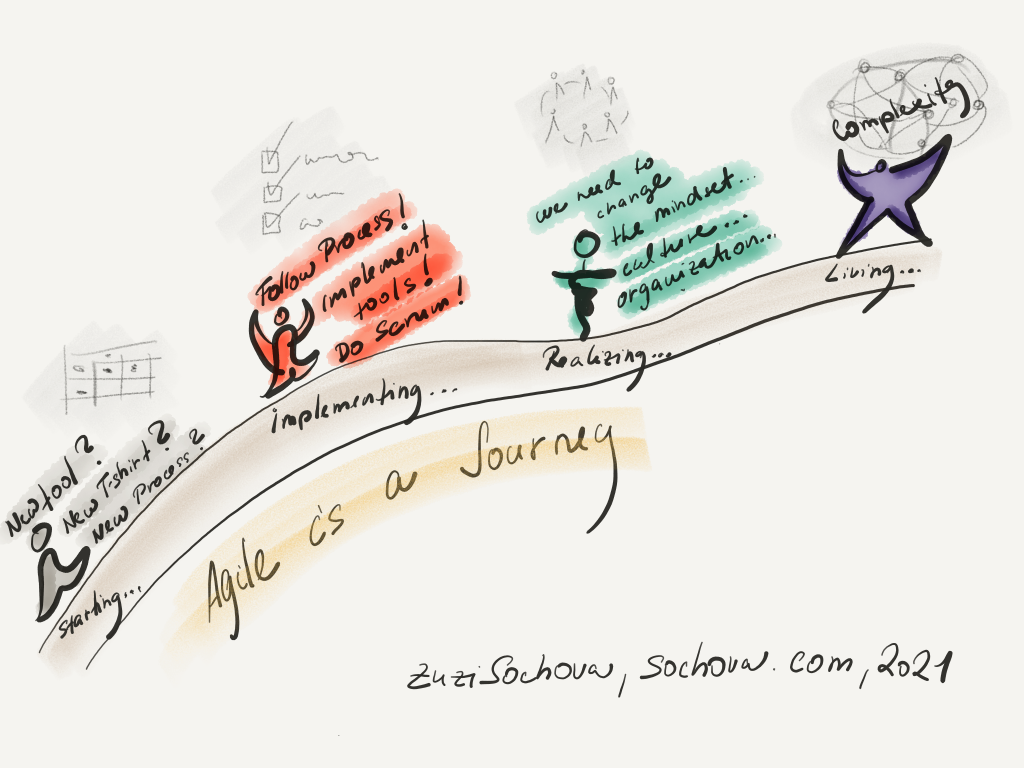Agile is a journey. In the beginning, people think it’s about different tools, new processes, new names. They keep comparing it to what they know and they are frustrated that the new way of working doesn’t fit the world they know. They still try to analyze, plan, estimate, and track delivery. The problem with that is that they are changing to agile not because there is a new improved method, but because their current way of working is not as successful as it used to be. There is a strong need for significant change. The traditional way of working was effective in solving predictable problems, not in dealing with complexity. In the current world, organizations need to be more flexible, innovative, and creative to address VUCA challenges. Agile brings new paradigms, a new mindset, a new way of working. It’s not comparable anyhow to the traditional ways of managing and delivering work.
Once they pass the initial phase, stop comparing and start looking for understanding, people often fall into a trap of taking all agile as a ‘religion’. Just follow the process, implement tools, do scrum according to the Scrum Guide! This phase is not much fun either. But they are on a journey, not fighting with any strong resistance anymore, and deepening their knowledge about various practices. People are interested, they want to understand it, do it well, however they are usually asking fundamentally wrong questions, looking for the best practices, believing they can copy & paste practices.
When they experiment, fail, and learn from failures enough, they start realizing the real agility, which is not in practices and tools, but in a different culture, mindset, and approach to things. They start realizing the organization and leadership need to change in order to finish the transformation and allow the agility to be successful. Agile becomes the way you not only organize the work but the way you live. It will bring different values and different perspectives.

